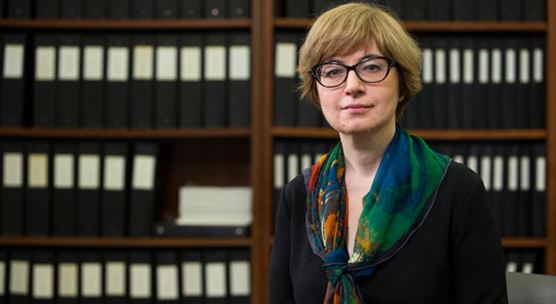
Russian Central Bank: The System Is Stable
December 5, 2017
Russia recently rebounded from a two-year recession caused primarily by sanctions and a steep drop in oil prices. Today, inflation is close to its lowest for the post-Soviet period, the ruble has appreciated in value, and consumers and companies alike are benefiting from easier credit. We sat down with Ksenia Yudaeva, First Deputy Governor of the Central Bank of Russia, at the sidelines of the IMF’s 2017 Annual Meetings to talk about where the economy is headed and what challenges policymakers need to tackle to cement the recovery.
Related Links
Although the Russian economy no longer is in recession, its growth prospects over the next five years look rather low at 1.5 percent, primarily because private investment in sectors other than oil and gas remains limited. How can the central bank help improve growth prospects?
As a central banker, let me talk about what kind of reforms we, as a bank and a regulator, have introduced to support medium- and long-term growth.
In the banking sector, we introduced Basel III regulations and substantially improved supervision. We would like to see a financial sector with healthy banks only. It will lead to increased competition, which will, in turn, make financial resources more available for the real sector.
We have a similar approach to the rest of the financial sector, including pension funds and insurance companies: we are working on improving the sustainability of all these institutions. The goal is to make them more solid and capable of providing long-term resources for companies and people.
We also pay a lot of attention to financial infrastructure and the development of domestic bond and equity markets.
Consumer protection and consumer literacy are also important in a country where banks sometimes charge interest rates that are too high or use other practices that may mislead consumers. That is why we have created an extensive consumer literacy program for different groups of consumers. We try to teach people about monetary policy and different financial instruments through a new website, and through a textbook on financial literacy for teachers, written together with the Ministry of Finance.
We are now thinking about integrating a selection of mathematical tasks on financial issues into basic textbooks. It seems to be a very good way of imbuing the brain with financial literacy: children should encounter and solve these kinds of problems in math classes right from the beginning.
The Bank of Russia recently bailed out two relatively large banks. In view of that, how would you evaluate the current stability of the Russian system? Is the consolidation of the banking system over?
Overall, the system is stable. We have had a turbulent period in the last couple of years. Bad loans increased, and profits and credit growth slowed down. This period seems to have come to an end and the economy and the banking sector are getting healthier.
To address the problem of nonperforming loans, we liquidate or rehabilitate so-called “zombie” banks, which are highly indebted and incur persistent losses. We all know that such zombie banks do not finance growth; they finance stagnation, if anything. Over the last four years, we removed some 350 banks from the market.
Unfortunately, it is still very common in Russia that private bank owners use their bank to finance their businesses. They think this is a safe strategy, but at the end of the day it is a very risky one. From time to time, we also have to deal with banks with bad business strategies: even if their books are correct on the surface, deep down they are insolvent. And there are institutions involved in money laundering; we are closing such banks, too.
Eventually, solving these problems will lead to more trust in a healthier banking sector that takes on a bigger role in financing growth.
The central bank’s key interest rate is the lowest since 2014, and at 3 percent, inflation has fallen below the Bank’s target. And yet, borrowing costs remain relatively elevated. Why is that, and how does it impact the country’s economic growth prospects?
The decline in inflation was partially explained by one-off factors, such as real exchange rate appreciation and a decline in food prices due to large crops. Inflation expectations are still high, so we are decreasing interest rates slowly.
As far as the effect on growth is concerned, high interest rates do not seem to have had a significant negative effect. Instead, it looks like a confidence effect is at play: macroeconomic stability has helped revive growth, and it compensated for whatever negative effect a tight policy could have had.
We see now that the output gap is closing, and the economy is getting close to equilibrium. We do not expect growth to speed up significantly when interest rates go down. It may even stabilize at a somewhat lower level.
This is why we need structural reforms, such as improvements in the investment climate and improvements in infrastructure to help us achieve a higher potential growth rate.
How do you see Russia's relationship with international financial institutions―in particular, the IMF?
Russia is one of the member countries of the IMF so we help finance some of the lending programs. But most of our contacts with the IMF are now related to technical assistance consultations. For example, we did joint work on financial inclusion and pension reform.
Overall, we highly value the expertise of international financial institutions, which carry the accumulative experiences of other countries. As we are going through a number of changes in our economy, we can learn a lot from such experience.






